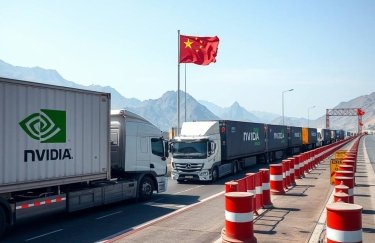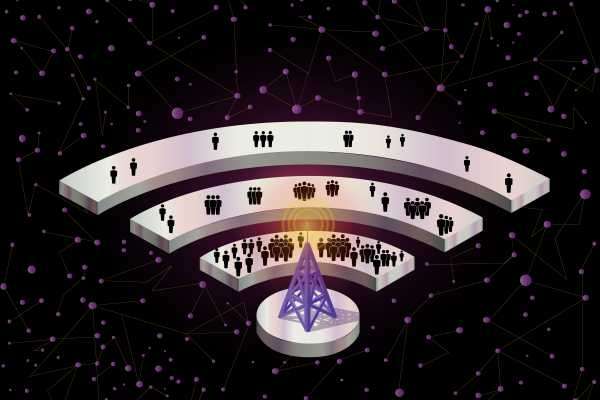
Give everybody the internet
We need to get the internet to everyone in America. Here’s what it would take to do it.
By
Emily Stewart
Sep 10, 2020, 8:30am EDT
Share this story
-
Share this on Facebook
-
Share this on Twitter
-
Share
All sharing options
Share
All sharing options for:
Give everybody the internet
-
Reddit
-
Pocket
-
Flipboard
-
Email
This story is part of a group of stories called

Uncovering and explaining how our digital world is changing — and changing us.
Since the pandemic set in, Grace Riario and Melissa Morrone have witnessed a similar phenomenon at the libraries they work at in New York: people gathering around to try to catch the wifi outside their doors because indoor service is largely shut down. “People sit in the parking lot and on the benches outside, and they sit there for hours trying to do work,” Riario said.
Riario oversees nine libraries in the Catskills region, where some areas don’t have access to broadband internet at all. Morrone is a supervising librarian in Brooklyn, where even if people do theoretically have access, many can’t afford it. They’re both seeing the real-life manifestations of the so-called “digital divide.” The divide is both rural and urban and tied to both access and inclusion.
According to the Federal Communications Commission (FCC), 21 million Americans don’t have access to quality broadband internet, though some estimates suggest that number is much higher, even double. Millions of people simply can’t access broadband because the infrastructure isn’t in place. Then there’s the question of cost — just because a wire runs by someone’s house doesn’t mean they can use it. In 2019, Pew Research found that half of non-broadband users still say they don’t subscribe to the service because it’s too expensive, and nearly one in five households earning $30,000 or less aren’t online. A $60-a-month internet option, about the national average, is only available if you have that $60.
Now the coronavirus pandemic has put into stark relief how crucial it is to have the internet — and how costly it is to be without it. For millions of kids, it means access to an education. For many workers, it means doing their jobs. For patients, it means talking to a doctor. It’s how we access government services, look for work, find our homes, and stay connected in our day-to-day lives.
“Broadband plays a role in every aspect of society,” said Nicol Turner Lee, director of the Center for Technology Innovation at the Brookings Institution. “The lack of connection means a degradation in quality of life; it debilitates you.”
The Brooklyn library system Morrone works for has plans to install antennas on building rooftops so they can extend their wifi signals into homes and public spaces up to 300 feet away. It will help, but it’s hardly a comprehensive solution. “It shouldn’t have gotten to this point here — the public libraries were such a critical node in people being able to participate in modern life in this way,” she said.
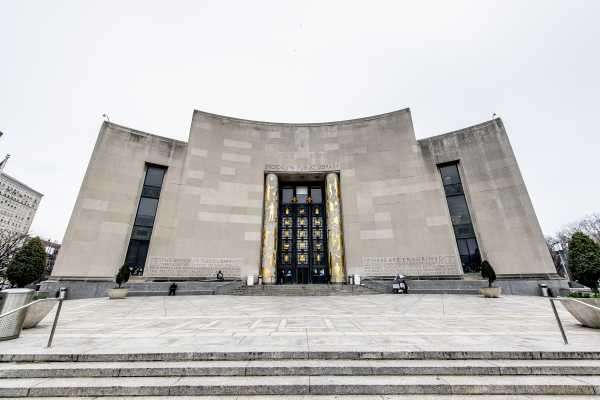
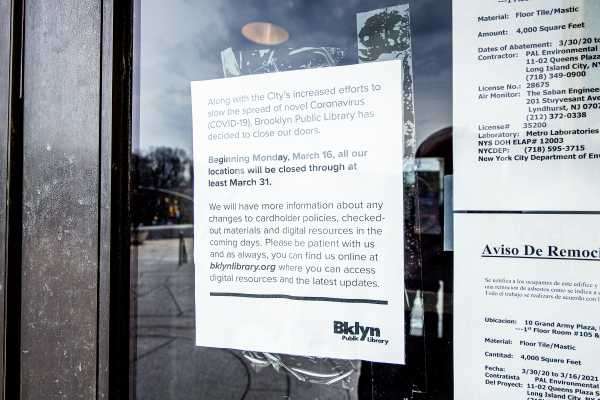
The current context has made internet access in America a more urgent issue than ever. The problem is painfully obvious, and fixing it entails understanding how we got here, seeing what’s at stake, and finally meeting the moment. There are areas in the United States where it is geographically difficult and expensive to get residents broadband. But getting the internet to everyone is not just about tech: It’s even more a policy question, one tied up in politics. Success will mean a multi-layered effort at the local, state, and federal levels.
“We need policymakers to understand that broadband is absolutely essential in the ability of people to be able to participate in society, in democracy, and in the economy,” said Jon Sallet, a senior fellow at the Benton Institute for Broadband & Society. His worry: “We have a digital divide that we’ve talked about for years, but the threat of this crisis is that it becomes a digital chasm.”
If it were lucrative for everyone in America to have the internet, everyone in America would have the internet
Broadband internet in the United States is not great. It is too slow, too expensive, and it is not everywhere, even in urban areas. Major telecommunications providers have been accused of “digital redlining” in cities such as Cleveland, Detroit, and Dallas, and discriminating against low-income and minority communities. Even where there is a decent internet connection, there’s often only one option for a provider, and customers are left to whatever the whims of that provider are.
The issue is, in part, that much of the country’s internet infrastructure has been left in the hands of the private sector, an atypical scenario relative to other services that require vast infrastructure.
The way it works is that there are fiber optic trunk lines across the US, and from there, other cables branch out. Fiber is fast and pretty much limitless in capacity, but it is also expensive to install — especially in the last mile, the final bit of connection to a business or home. Most people get broadband through coaxial cable networks for that last mile, while others go through DSL that runs on copper phone lines. The former is slow, the latter slower. The US lags behind countries such as South Korea, Japan, and Switzerland when it comes to typical download speeds.
“We’re willing to build an interstate, but we’re not willing to pay for the internet,” said Tom Wheeler, who served as FCC chair under President Obama.
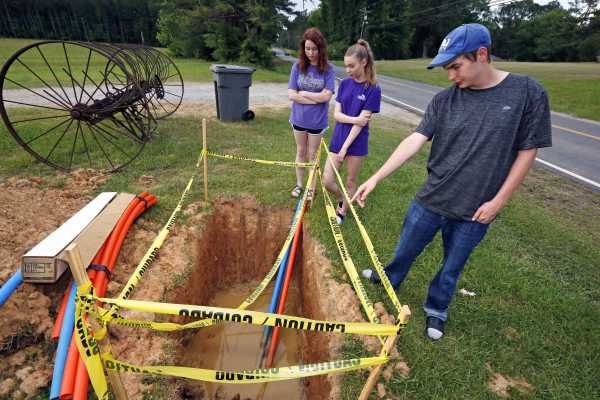
For private telecom companies building out broadband, that means making decisions about where to expand based on their bottom lines. Getting the internet to small communities or communities that are unlikely or unable to purchases their services may not be worth the upfront investment. The competitive incentive isn’t there.
“The market simply will not provide the level of broadband access that democracy requires,” said Victor Pickard, a professor of communication at the Annenberg School for Communication at the University of Pennsylvania. “Internet service providers treat the internet as a commodity, as something they can make money on. They’re not looking at it as a public service … they’re looking at it as something that can expand their profit margins.”
Telecommunications companies and ISPs are natural monopolies, which means that high infrastructure costs and other barriers to entry give early entrants a big advantage over potential competitors. It costs money to install cable systems, and once one company does it, another one doesn’t want to do it again, nor does the company that made all the investment want to share. Many Republicans and Democrats have taken a lax attitude toward the telecom industry, allowing companies to get big and powerful — the Telecommunications Act of 1996 allowed for an enormous amount of consolidation in the industry. On top of that, at the local level, many municipalities have signed franchise agreements with ISPs to wire up their areas, further locking in monopolies with little negotiating power.
“If you leave these guys to their own devices, they will divide up markets, consolidate, and charge as much as they possibly can,” said Susan Crawford, a law professor at Harvard and the author of multiple books about the telecom industry. Crawford has long advocated for nationwide high-speed fiber internet, which would allow for basically limitless amounts of data to travel.
The government has given private companies billions of dollars to try to fund broadband projects, especially on the rural front, but not all of that money has been well spent. Funds have gone to operating costs for existing telecom providers instead of capital costs to build infrastructure outright. Sometimes, companies don’t wind up building out the networks they promise.
“Their role is to connect people who can pay for access, and their role is clearly not figuring out how to connect low-income folks or people who live in the Adirondacks,” said Christopher Mitchell, director of community broadband networks at the Institute for Local Self-Reliance.
Riario, the Catskills librarian, is well aware this is a big part of the issue in her area. “Companies are not going to come to a region that does not have enough customers for them to make money. They’re not into social justice,” she said.
A good way to think about it is like how the mail, a public entity in the US, works as compared to broadband. If the mail were private, carriers wouldn’t go to a lot of places in the country, and if they did, it would be expensive. Delivering a letter to rural Montana costs the Postal Service a lot more than delivering one to downtown Washington, DC.
“There’s been this notion that somehow broadband service is something that we should leave to the marketplace, and it’s a colossal failure”
Whether or not private companies want to undertake every connection project themselves, they don’t want competitors to, either, because they’re afraid models would develop that would threaten their business. More than 20 states have laws that ban or put up roadblocks to municipal broadband projects that might allow cities to provide alternatives and compete. The telecom lobby fought hard for these provisions. In deep blue California, a bill to expand broadband access there recently died in the state assembly.
“This is a situation that Americans really support [expanded broadband access], but elected officials only hear from cable and telephone companies,” Mitchell said. “There’s no Sierra Club of broadband yet, so we’re at a real disadvantage when it comes to lobbying.”
Gigi Sohn, a distinguished fellow at the Georgetown Institute for Technology & Law Policy, was more cutting in her assessment: “There’s been this notion that somehow broadband service is something that we should leave to the marketplace, and it’s a colossal failure.”
Where there’s a (political) will, there’s a way
Perhaps the biggest success story to date in the US of a city taking the internet into its own hands is Chattanooga, Tennessee. In 2010, the Electric Power Board of Chattanooga, the city-owned utility known as EPB, began offering ultra-high-speed internet to all of its residents after building out fiber to the city for a smart grid.
“It occurred to me that we were like the first city to have fire,” former Chattanooga Mayor Ron Littlefield said.
The feat wasn’t easy. It cost $330 million, $111 million of which was federal money, and required buy-in from stakeholders of various political stripes. It also entailed court battles — Comcast sued the city to try to stop the project altogether. (Comcast is an investor in Vox Media.) Littlefield recalls the push-and-pull with the telecom companies, who argued that it wasn’t fair for government to compete with private enterprise. “I said to both of them, ‘Are you kidding me? You want to compare balance sheets?’”
Comcast declined to comment on Chattanooga.
Chattanooga didn’t win every battle — the telecom lobby later succeeded in getting Tennessee to bar the city from expanding its fiber optic system beyond its electric footprint. (The FCC tried to block the state from doing that but ultimately lost in court.) But within that footprint, the service is impactful, especially now. During the pandemic, EPB has set up at least 130 wifi hot spots around the community to help people stay connected, and it is in the process of raising $8.2 million needed to get its internet service to 28,000 economically disadvantaged students at no cost as part of a program set to last for 10 years. Not only will it help two-thirds of the school system’s population stay connected, but it will also be enormously beneficial to their entire families.
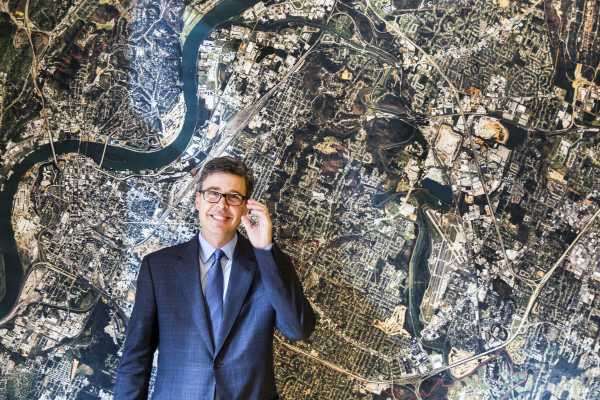
Elizabeth Prieto, whose 12-year-old daughter, Ozada, qualified for the program, uses EPB’s internet to work from home as her daughter uses it for school. “It was a blessing when it was announced. I couldn’t believe my eyes,” she said. Prieto, a single mother, lost work at the beginning of the pandemic and is trying to start her own business.
Kimberly Rios-Gonzalez’s family had been using Comcast’s $9.95 internet essentials program for low-income households, but by the middle of the summer, they could no longer afford that and in late August had service cut off, just as Rios-Gonzalez’s 12-year-old daughter was heading back to school. EPB hooked up new internet for her right away. “It’s been so great, and we don’t have to worry about it getting cut off,” she said.
“The thing that makes this work so well is that all these entities stepped up and said, ‘We’ve got to solve this,’” said Deb Socia, president and CEO of the Enterprise Center, a local nonprofit. “This is something that will allow this big, audacious goal to be a reality.”
While Chattanooga represents how municipal broadband can work, it also demonstrates how even in the best of circumstances, political battles continue. Local officials are careful to say EPB’s program to connect students is “at no cost to the customer” instead of “free” because under Tennessee state law, it’s not allowed to subsidize service, and it’s had to engage in some wonky calculations to make it work. And EPB still can’t expand service to its neighbors.
“The only thing that’s stopping us is politics,” said Chattanooga Mayor Andy Berke. “We have the technical know-how, we have the financial wherewithal, and the thing that stops us from providing high-speed broadband politics to Americans is politics, and that’s really tough.”
Despite the challenges, Chattanooga is hardly the only example of a city taking the reins of internet infrastructure. Ammon, Idaho, for example, set up an open access network with several internet service providers that has driven down prices. In fact, more than 900 communities across the country have built out their own internet networks, including municipal networks and cooperatives.
“If you look at the local level, you see a lot of imagination and political will, community will, to solve the problems,” Sallet said.
Some communities have opted for more ad hoc workarounds and built out mesh networks, where groups tap into the fiber backbone and then use antennas to spread internet around local areas. NYC Mesh, an organization in New York City, is in about 500 buildings across the city and connects about half a dozen new households each week. Users are asked for a suggested contribution for setup and use, but people pay what they can — some a little, some a lot. “Our core tenet is that the internet is for everyone, and the amount you can afford each month, where you live, or what your home may look like should have nothing to do with whether you have an ability to go online,” said Scott Rasmussen, an organizer with the group.
“The internet is for everyone, and the amount you can afford each month, where you live, or what your home may look like should have nothing to do with whether you have an ability to go online”
The point of mesh networks goes beyond connecting certain communities — it’s also a way to create political momentum to broader action, explained Greta Byrum, director of Community Tech NY. “What it does do is it educates people about the structure and the power dynamics,” she said. “The vast majority of city and town administrators and city councils and mayors and school districts, they don’t really understand actual infrastructure.”
That’s the type of will that’s necessary to overcome industry pushback. “The cable companies try to write laws to stop communities from making their own broadband cooperatives because of their monopoly rights,” said Andrew Blum, the author of Tubes: A Journey to the Center of the Internet.
The more people know and care about the matter, the harder that becomes. And right now, more people are thinking about it now than ever.
“I think Covid-19 has made it even clearer how important it is to have internet access, and that creates a political opportunity,” said Ganesh Sitaraman, a Vanderbilt law professor.
“Congress could move the needle without paying a red cent right now”
Getting everyone on the internet is impossible without government action at the state and, ultimately, federal level, though there is hardly a consensus on what exactly needs to happen. Some proposals cost money; others do not.
Multiple experts I spoke with pointed to the $100 billion Accessible, Affordable Internet for All Act put forth by House Majority Whip Jim Clyburn (D-SC) as a solid option. It includes putting $80 billion toward deploying high-speed broadband infrastructure across the country and providing a $50 monthly internet subsidy for low-income households, among other measures, in an attempt to address both accessibility and affordability. Sohn described the bill, which passed the House but has gone nowhere in the Senate, as the “candy store” of ideas for digital inclusion. Sallet said it’s a “really good place to start.” It’s also an idea private companies shouldn’t hate, because that $50 subsidy is going into their pockets.
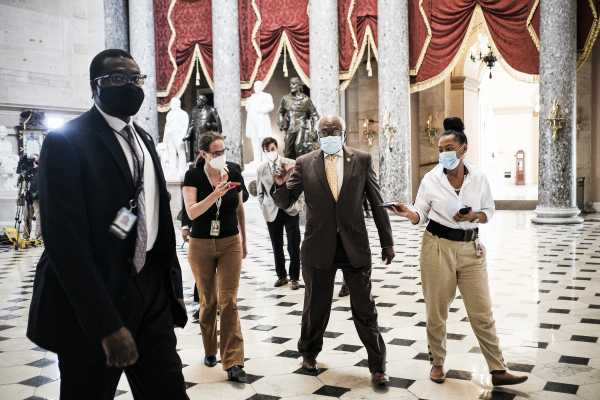
Another place to start at the federal level is examining the likelihood the FCC overstates the amount of broadband access there is in the US. Internet providers report whom they serve per census block, and if they serve a single household in a given block, it counts. “As a carrier, I can tell you that’s overstated coverage,” said Dane Jasper, CEO and co-founder of the internet company Sonic.
If you don’t know the scope of a problem, it’s hard to start fixing it. As Bloomberg notes, the amount of money approved for FCC’s Rural Digital Opportunity Fund to try to help bridge the digital divide is based on this probably flawed data.
But there are areas where the federal government can act that don’t involve new money, or at least not sweeping public investments and policy changes, and instead are aimed at patching issues right now.
The FCC has a program called E-Rate that provides funding for internet in schools and libraries, but that internet is limited to the physical buildings. The current issue, of course, is that the classroom is in people’s living rooms and bedrooms. The FCC has $2 billion in E-Rate funds that could be directed to the surrounding communities, but thus far, it hasn’t happened. The state of Colorado has filed a petition with the FCC asking for the program to be modernized to meet the current moment. Officials in Chattanooga point to expanding the use of E-Rate funds as a thing that would help there, too.
“I do believe the FCC could do that tomorrow if it wanted to,” Sohn said. But if it won’t, she said, “Congress could move the needle without paying a red cent right now.”
The FCC says the law limits funding to “classrooms” and that the ball is in Congress’s court.
Advocates also push for an update to Lifeline, a $9.25-a-month program put in place under the Reagan administration trying to make sure everyone could access the phone and therefore call 911. The program can now go toward the internet, but the funding is largely limited to telephone companies, Wheeler said, and needs to be expanded more broadly. “Red tape is the reason why that doesn’t happen, but that could be fixed by the FCC,” he said.
The FCC, like many government entities, is prone to industry capture — being too friendly with the companies it’s supposed to regulate. Under current chair Ajit Pai, critics say that has been especially true. The FCC repealed net neutrality under his watch and has made multiple industry-pleasing moves. At the outset of the pandemic, it rolled out a Keep Americans Connected initiative where companies pledged not to terminate service through June. It was voluntary.
“Looking at them, they are exhibiting a textbook case of regulatory capture. They internalize the logics and values of the very industries they purportedly regulate,” Pickard said. “In many ways, they are just performing customer service for these companies.”
In an email to Vox, a spokesperson for the FCC said that Pai has “proposed and imposed some of the largest fines in FCC history” on service providers and has “repeatedly adopted policies” that foster competition among incumbents and allow new entrants to deploy. “In short, his policies put consumers and innovators first,” the spokesperson said.
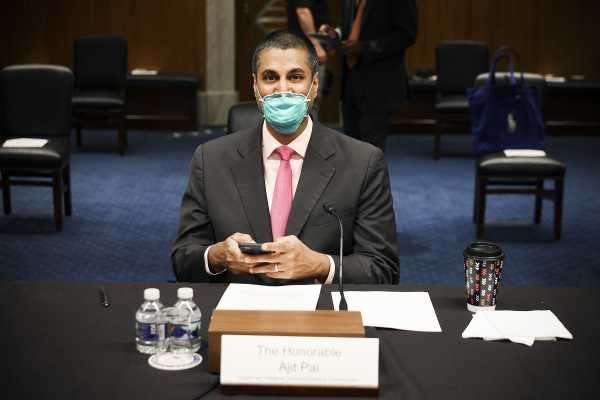
Pai has said that bridging the digital divide is a top priority for him at the FCC, but Wheeler noted that much of that has translated to connecting rural areas — and, more specifically, President Trump’s constituency — and not to connecting communities of color or low-income populations. “We’re making progress in rural [areas], but we’re still not doing enough,” he said. “We’re going backward in low-income America.”
While a higher share of rural households lack a broadband subscription compared to urban ones, by total numbers, three times as many households that don’t subscribe live in non-rural areas. That’s why any solutions need to focus on both access and affordability, families and kids in the country and in the cities.
“Many students simply do not have the same type of infrastructure as others,” said Andre Perry, a fellow at the Brookings Institution’s Metropolitan Policy Program. “That’s pretty much the very definition of structural inequality.”
The FCC spokesperson said that while rural programs dominate the headlines, Pai has taken “aggressive steps” to connect all Americans.
America’s internet problem is not a Covid-19 problem
While the pandemic may have put more public attention on the severe dilemma of internet access in the US, whenever the disease comes to an end, the problem won’t be solved. Everything wasn’t fine pre-pandemic, and it won’t be fine post-pandemic, either — the FCC’s National Broadband Plan was released more than a decade ago, and look where we are.
“Policymakers have failed in the last decade to treat it with the sense of urgency that’s needed,” said Chris Lewis, president and CEO of Public Knowledge, an internet public interest group. “The solution takes time, it takes funding, and it takes the authority to create regulations at the FCC to ensure that the major barriers to closing the digital divide can be addressed.”
“Policymakers have failed in the last decade to treat it with the sense of urgency that’s needed”
Reasonable minds can disagree on what exactly a solution should look like. Elizabeth Warren campaigned on a public option for the internet; Bernie Sanders wants to turn it into a public utility. Some people insist the future lies in wireless and 5G faster networks (though how much of the hype around 5G is real is an open question). It would go a long way if the government would just put in pipes every time it does digging for an infrastructure project. That’s part of what happened in Chattanooga — the city was upgrading its infrastructure, and local leaders made the effort to expand it to internet. Eventually, we need to lay pipes across the country like the highway for private companies to compete along it.
While most experts agree some sort of government intervention is necessary, they also emphasize that it’s not a panacea and that the private sector is going to be involved.
“Too much government intervention lends itself to the same types of restrictions of public welfare that we see on poor people,” Brookings’s Turner Lee said. “Government didn’t do a good job in Flint, [Michigan,] and I don’t think they will do an exceptional job when it comes to people of color.”
“Whether you like it or not, most of the money for broadband is going to come from the private sector,” said Roslyn Layton, a visiting researcher at Aalborg University in Denmark.
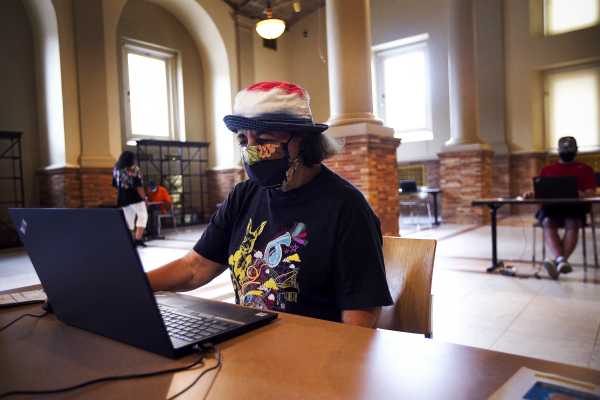
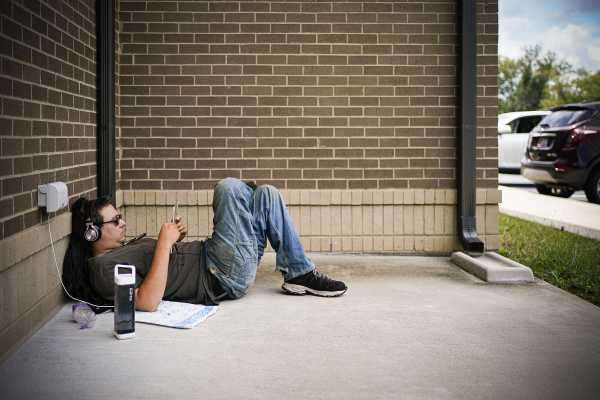
The seriousness of the digital divide in the US isn’t new, but the urgency around it is. David Stehlin, CEO of the Telecommunications Industry Association, disputed the idea that the internet should be a public utility, but there’s no denying it is important. “Everyone at the end of the day should be able to communicate,” he said.
Can the country undertake some sort of internet-for-everyone moonshot? If there were ever momentum around the issue, it’s now. It’s been done before, as part of the New Deal and President Franklin Delano Roosevelt’s efforts to bring electricity to rural America. The idea of public electrification was met with enormous resistance from private industry in the 1930s, but today, the idea that everyone should have accessible, affordable electricity is a no-brainer. It’s time we think about the internet that way, too.
The good news, Crawford said, is that communities taking the issue of internet access into their own hands may help shame the federal government into a better policy eventually. The bad news is it’s likely to be a “heartbreakingly slow process.”
In the meantime, winter is coming, and for families huddling outside libraries trying to catch wifi to do schoolwork, that’s an immediate problem. “My concern is the wintertime,” Riario said. “It’s not pleasant.”
Help keep Vox free for all
Millions turn to Vox each month to understand what’s happening in the news, from the coronavirus crisis to a racial reckoning to what is, quite possibly, the most consequential presidential election of our lifetimes. Our mission has never been more vital than it is in this moment: to empower you through understanding. But our distinctive brand of explanatory journalism takes resources — particularly during a pandemic and an economic downturn. Even when the economy and the news advertising market recovers, your support will be a critical part of sustaining our resource-intensive work, and helping everyone make sense of an increasingly chaotic world. Contribute today from as little as $3.
Sourse: vox.com

